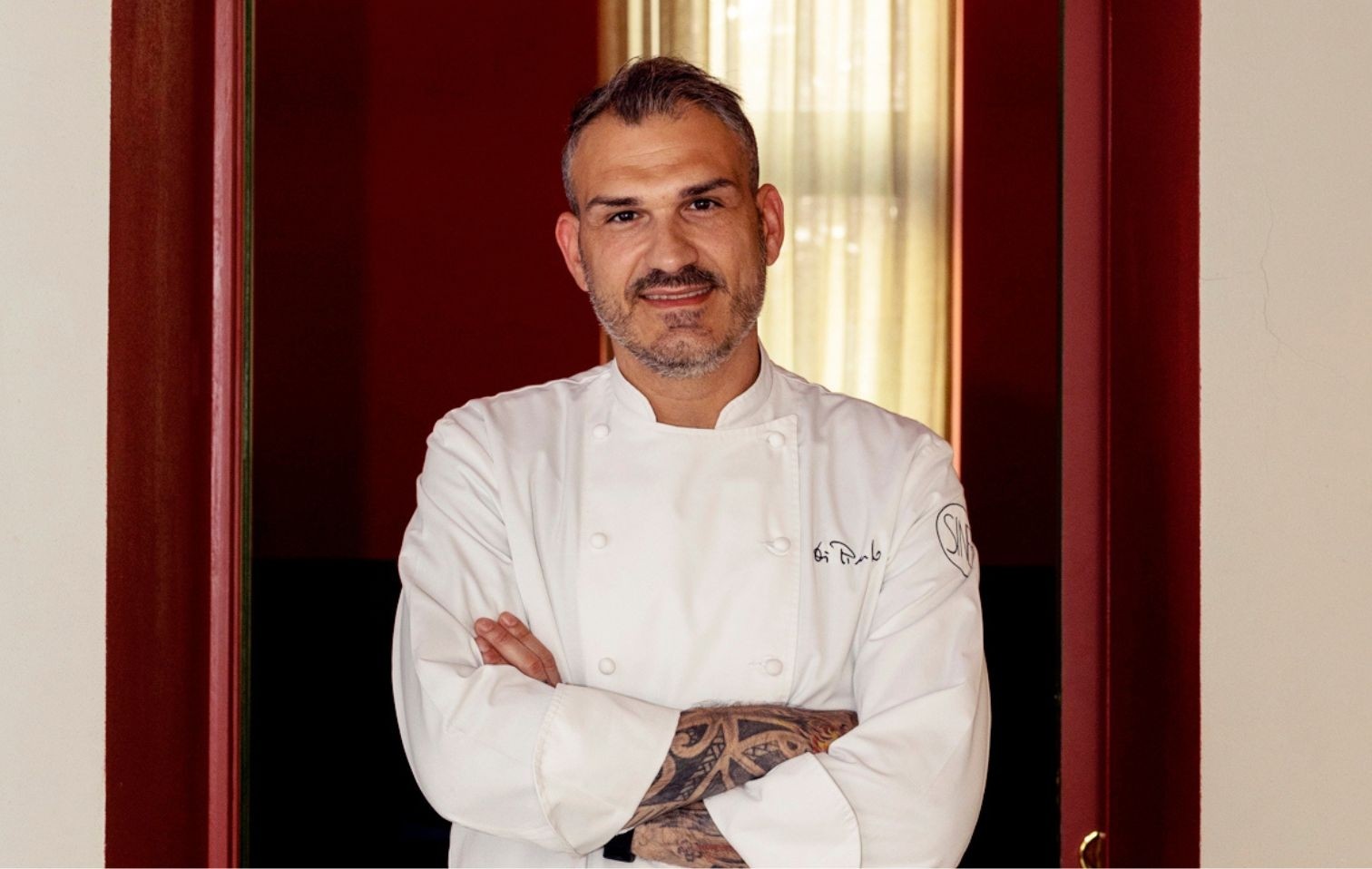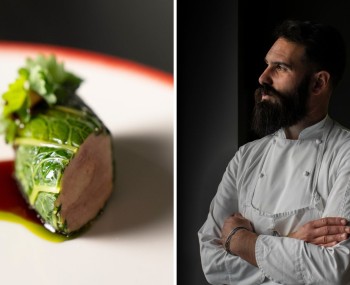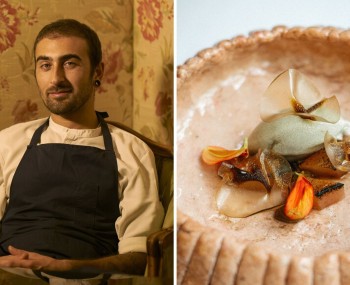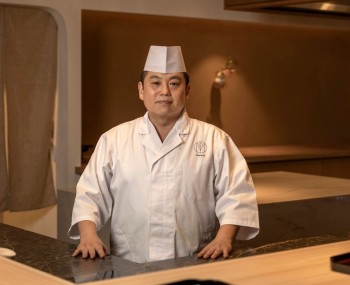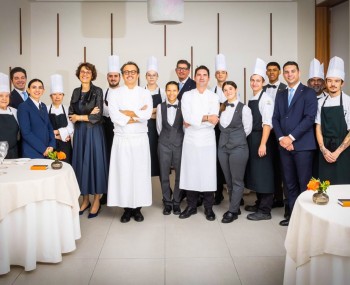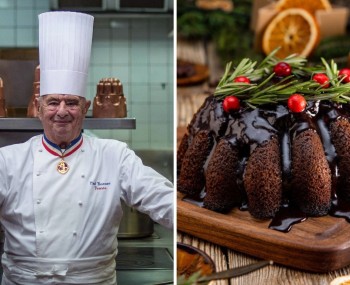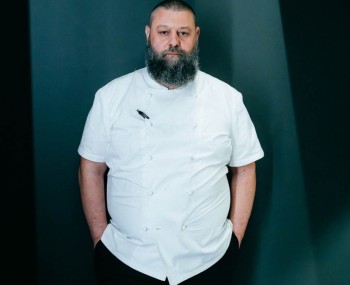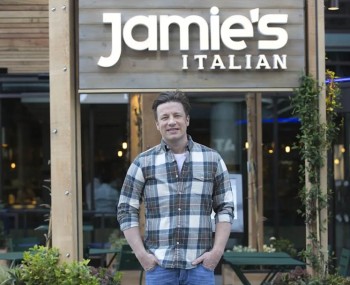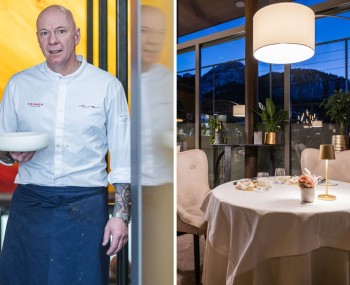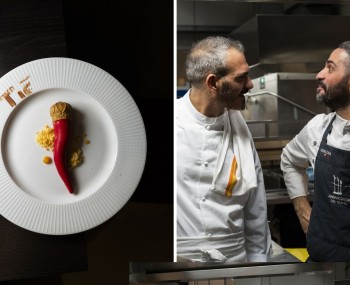Creative freedom is a cornerstone of his cuisine: Roberto Di Pinto describes a boundless and unconventional Naples, with one simple rule: "It's not our evening; it's the customers'. They always come first."
The Chef
One may endeavor to find intricate vocabulary and elegant phrasing, but when a concept is so strong, explicit, and deeply rooted, it's best to express it straightforwardly: "Neapolitan spirit" is the phrase that best represents Roberto Di Pinto's cuisine. Neapolitan spirit doesn't translate into bringing Naples to the plate, but into the way of thinking, because Di Pinto thinks in Neapolitan: in his dishes, ideas and creativity, closely tied to his homeland, intertwine with experiences abroad.

Naples saw him grow, molded him, made him dream, and gave him that inevitably volcanic character that takes him beyond borders in search of new experiences, tastes, and cultures. From abroad, Roberto returned even more Neapolitan: There, he developed a DNA of unmistakably Neapolitan flavors, which, however, in his dishes, undergo an entirely unexpected evolution, often pushing boundaries but never lacking respect for tradition. Naples, for Roberto, is like a parent who doesn't imprison the child in patterns and clichés but allows them to find and express their inner self freely.
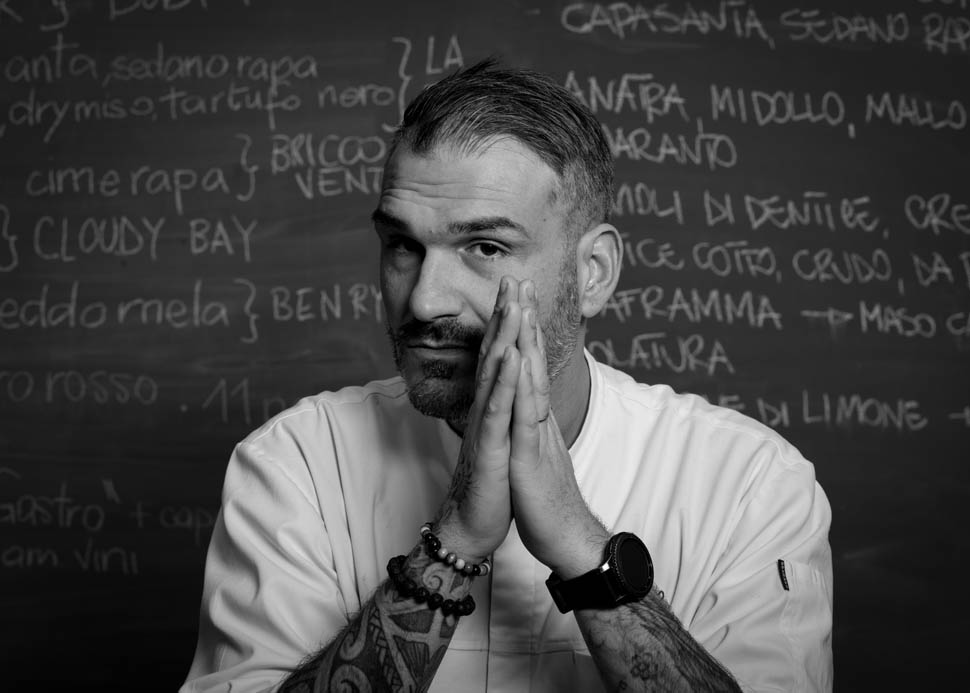
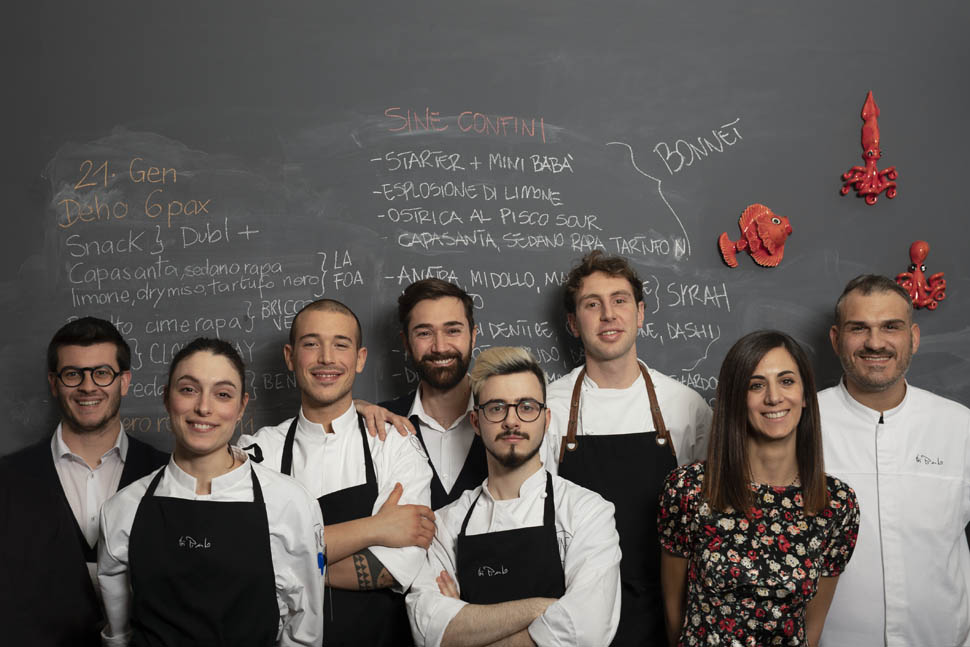
The restaurant
Sine By Di Pinto, located at 126 Viale Umbria, is the place where in 2018, after a rich career in kitchens around the world and luxury hospitality, Roberto revealed the all-rounded artist within him.
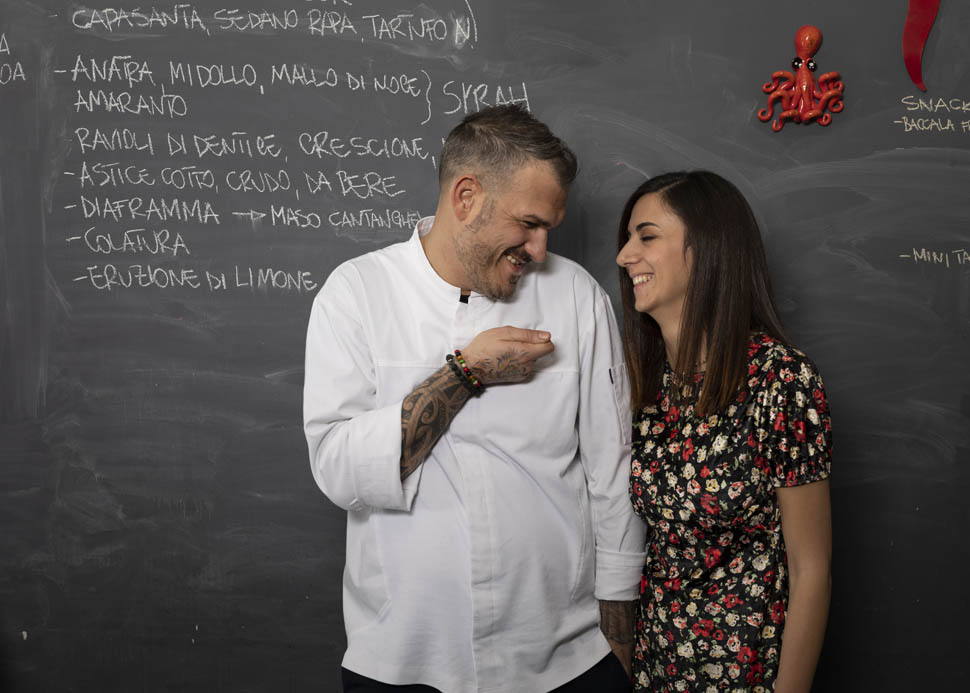
"Sine started as a 'gastrocratic' restaurant: I needed to enter the scene with a slightly more popular cuisine, I needed to make myself known and create my clientele. Yes, I was already in Milan from Bulgari, but it was as if I had played in a different league until then: hospitality and fine dining are two different worlds. I needed to make myself known independently. Unfortunately, the pandemic arrived shortly after, but despite the setback, delivery allowed us to enter the homes of many Milanese who didn't know us. With the situation restored and fueled by the success of delivery, I realized the time was right to move forward," he reveals today. It was time to take a step forward, and rebranding was the right path; therefore, since actions speak louder than words, Roberto decided to physically remove the word "gastrocratic" from the signage. The soul of Sine remains the same, but it's a soul that has enriched and evolved.
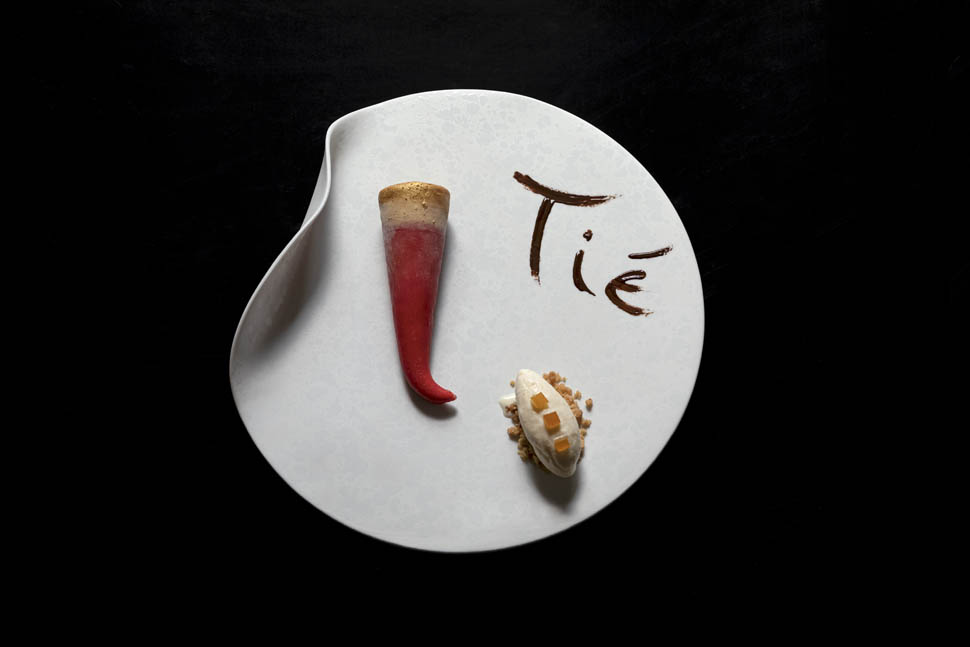
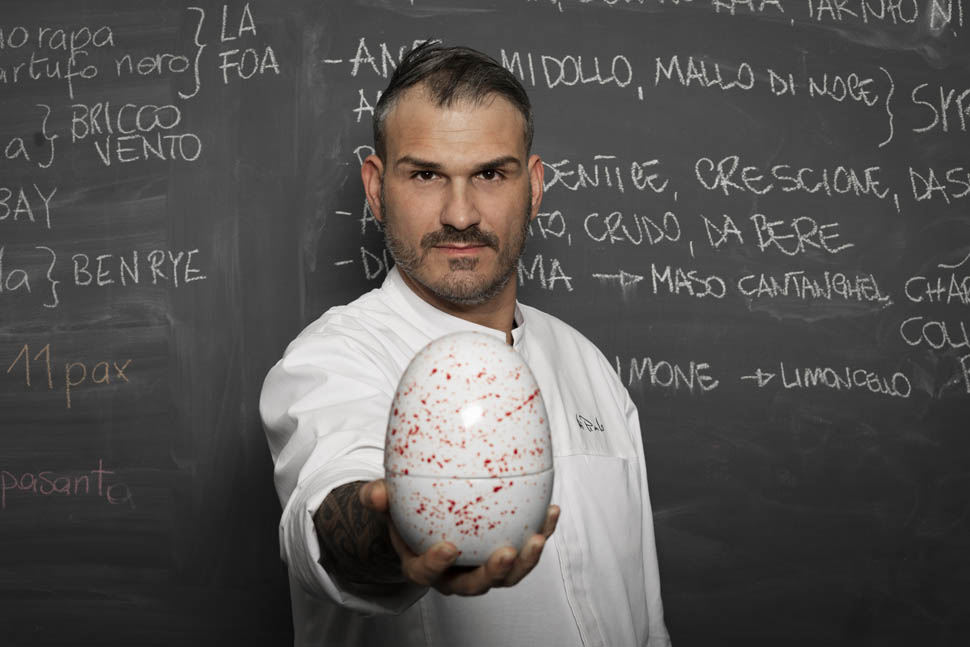
"The name 'Sine,' which means 'without' in Latin, spontaneously came to me during a vacation in Ischia. It expresses my philosophy: Sine is a place without boundaries; here we respect the rules, but only if they benefit the customer. If they are unnecessary, we bypass them. An excellent service doesn't necessarily require the ritual of gestures or the use of certain techniques. My goal is to be happy, and to achieve that, I must ensure that my employees, my associates, and all the people who come to see me are happy too. Every evening, when we do the briefing at seven before service, I like to remind everyone that it's not our evening, but the customers' evening: customers aren't coming to see a concert or a show, they're coming to dine," Di Pinto continues.
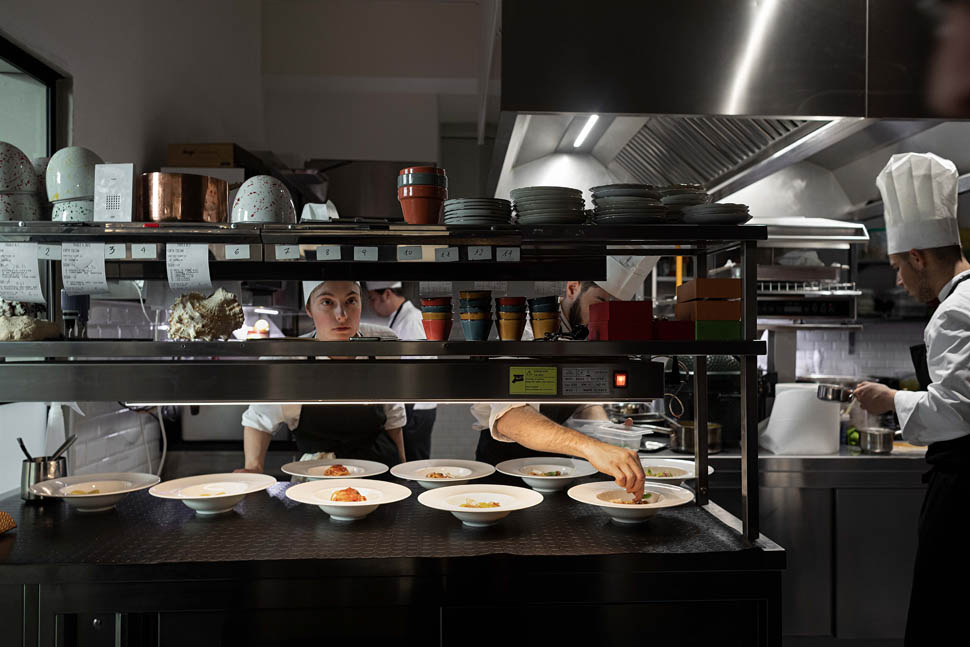
In telling Roberto's story, it's impossible not to mention Gennaro Esposito, the quintessential Neapolitan chef and his mentor. The revelation on the path of cooking for the chef was indeed a brief experience: a one-month internship, at the age of thirty, in Esposito's kitchens, where he managed to define his essence deeply. "At thirty, you are more selective than at twenty. I had many experiences behind me, but between the ages of 20 and 30, I didn't have a defined identity in the culinary world; I was still searching. I had learned a lot, I had gone from molecular cuisine to French cuisine to Asian cuisine: there was a lot of material, but I was confused, very confused. By Gennaro's side, I found myself, I found my Naples. That month was a real emotional shock; I found myself in a place where everything was conceived to enhance the territory, not only in its products but also in its history and anthropology. In that moment, it was as if I had freed myself from the patterns and had truly found myself: in my cuisine, there is Naples, but it doesn't stop at Naples. Naples is the fun part, the part that makes me happy."

The dishes
Saint Gennaro and a vibrant red horn are just some of the unmistakable signs that leave no doubt: here, Roberto Di Pinto is in charge. From the entrance, where various design pieces find a place, paying homage to pop culture, one arrives at the main dining room. The colors are warm, and the lights are soft; The eye is immediately captured by a bright pink neon sign saying, "Suona, ca sò suonne d'oro” (Dream, here you dream gold), the chef's wish to the diners.
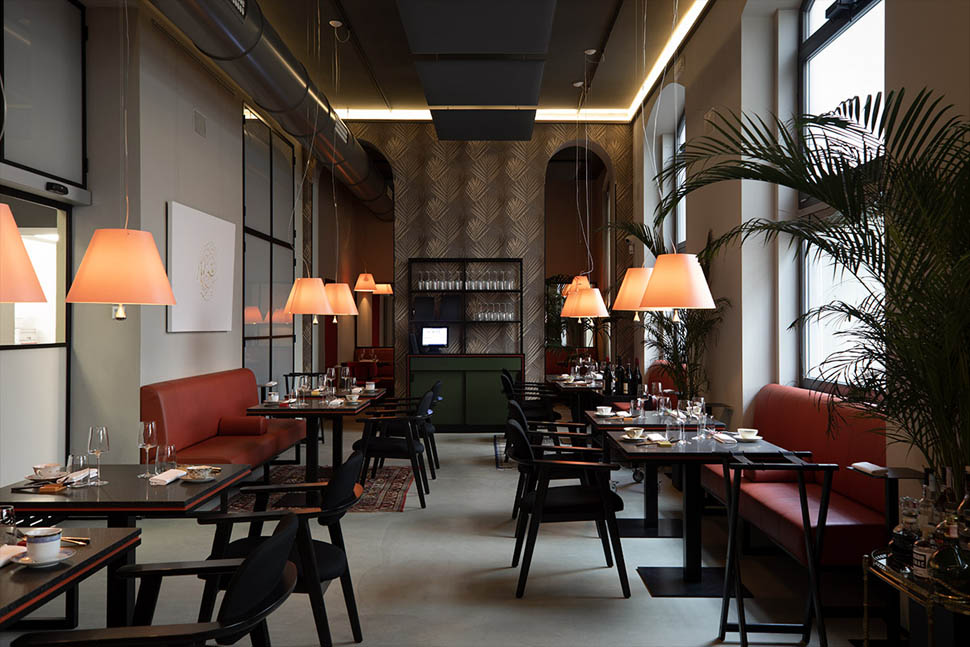
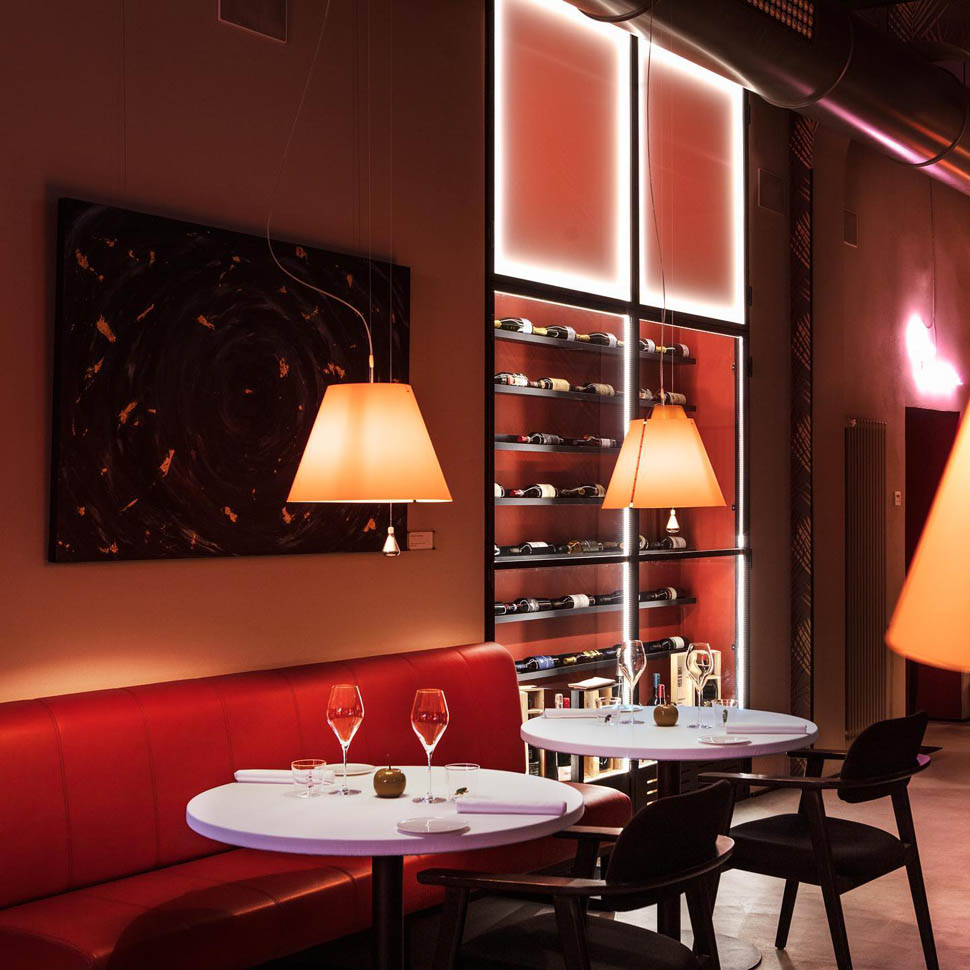
The mise en place is essential but thoughtful. On the white tablecloth, the statuette of Saint Gennaro stands out, sealing the authenticity of the upcoming experience. An experience that, faithful to the abundance that often characterizes Neapolitan tables, begins with a welcome from the chef consisting of eight amuse-bouches. There's no strict order to follow; the chef's advice is simple: "Start with the hot snacks, you'll enjoy them more," almost emphasizing that creative freedom is a cornerstone of his cuisine.
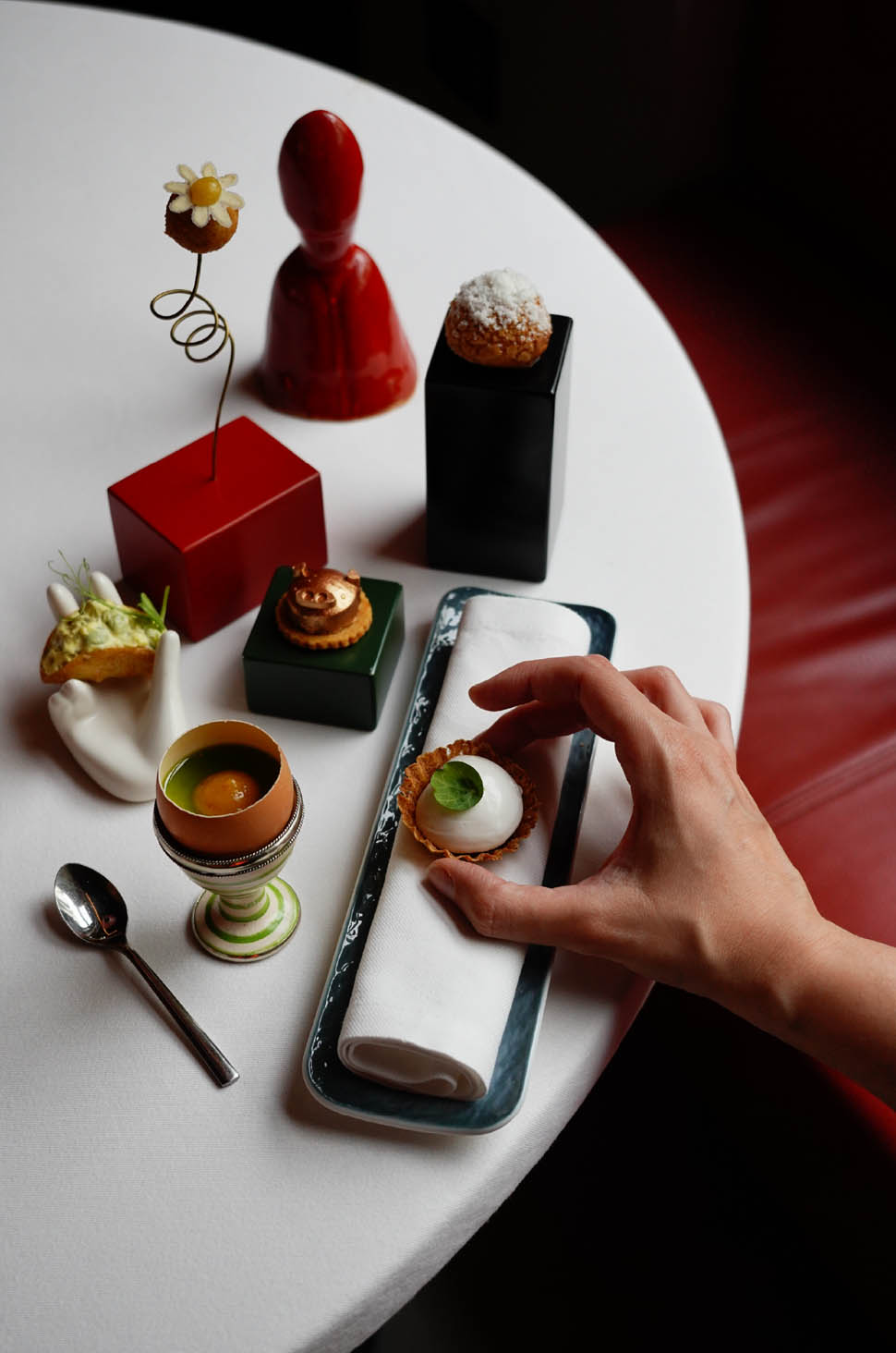
It comes natural to start with the Egg, the only snack to be enjoyed with a spoon - everything else is eaten strictly with the hands. It's a selva egg royale with cave-aged Carmasciano pecorino, mint oil, and bitter orange compote, where the creaminess of the egg encapsulates the balsamic quality of mint oil. The taste immediately leads to the sampling of Di Pinto's famous fried mini pizzas, in this case with zucchini, marinated bonito with citrus, and almonds.
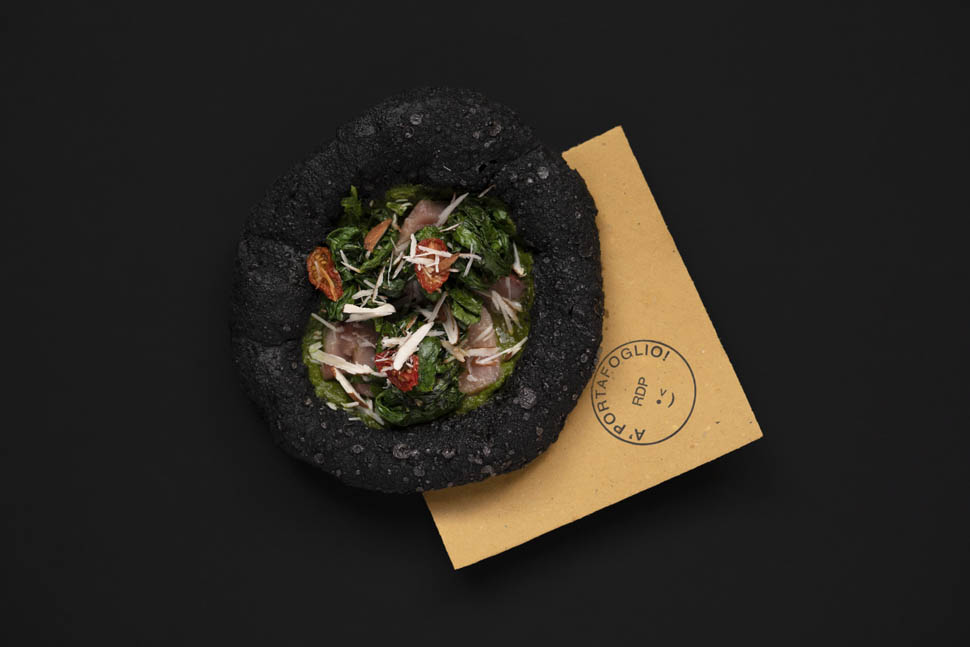
Next are the cod croquettes with lemon marmalade, saffron, and celeriac, and another inevitable Neapolitan street food item, the fried pasta frittatina with dill, bottarga, and tomato ketchup: it's Naples right away. From the warm bites, one transitions to the cold ones to prepare the palate for a play of textures, temperatures, and consistencies, a distinctive feature of each of the chef's dishes. A funny golden piglet conceals the Neapolitan pork stew; a sauce in Neapolitan tradition made with all the pig's offal and here finds its most elegant expression, turning into a "pop foie gras" resting on a Vico Equense provolone del Monaco biscuit.
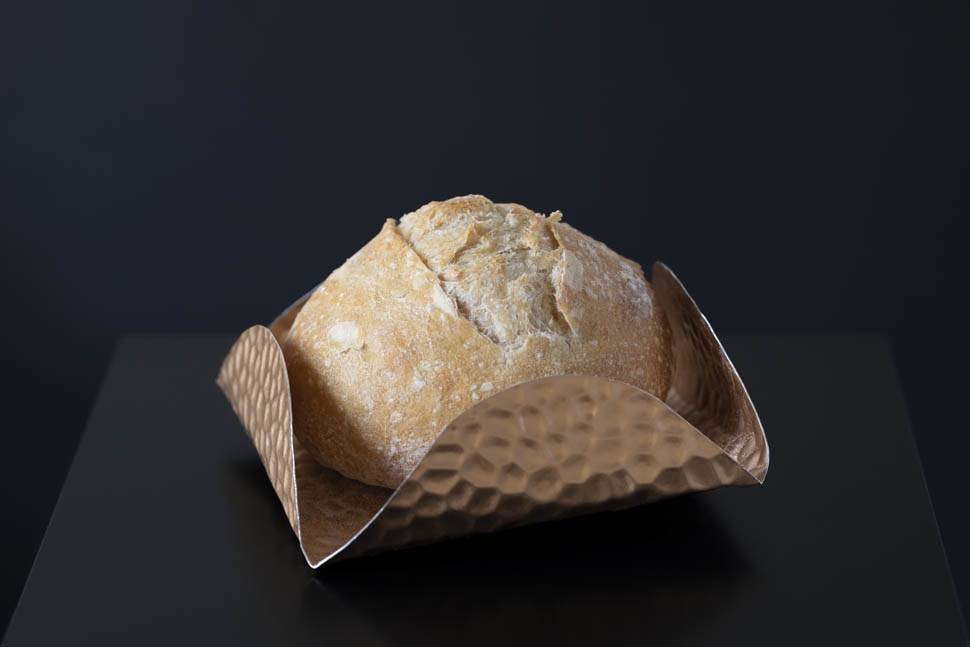
The seaweed taco with ceviche takes you beyond borders, but the idea remains in Naples. The ceviche, in fact, is Neapolitanized: instead of leche de tigre, the chef uses ingredients from acqua pazza - seawater, tomato, lemon, and spring onion. There's also the tartlet of stale bread with turnip salad and marinated anchovy mayonnaise, which accompanies the Holy Grail of the Di Pinto family's cuisine: Sunday's ragù. The typical Genovese sauce is faithfully reproduced here according to Mrs. Rosa's recipe, Roberto's mother.
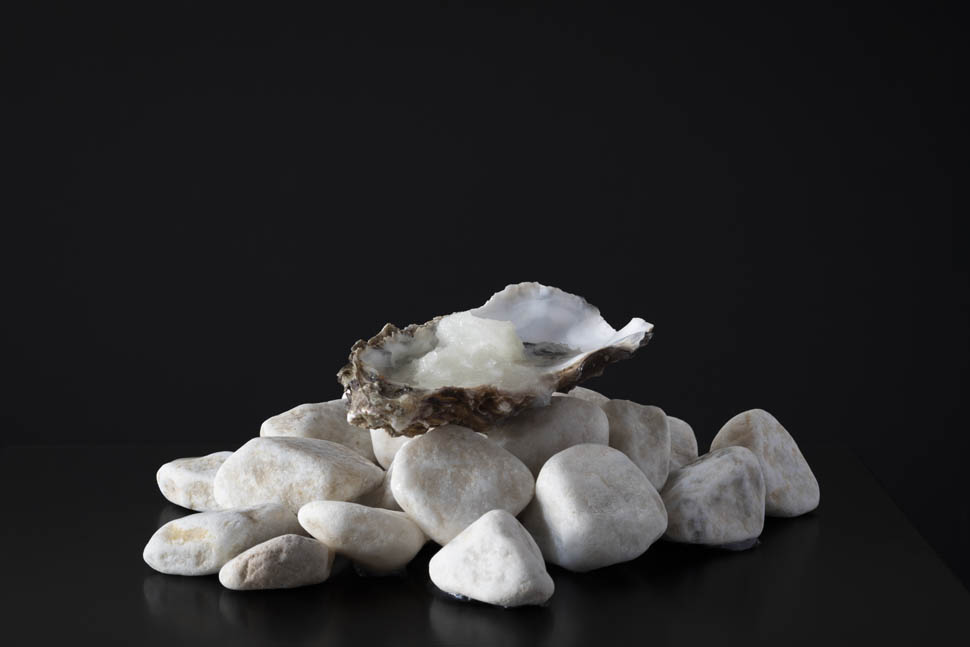
The Oyster with Pisco Sour, a dedication from the chef to his colleague Virgilio Martinez, has been on the menu since the beginning and is the first course of the "Sine Confini" (Without Boundaries) journey. The oyster is a Kys, and the Pisco Sour, the iconic cocktail of Peru, becomes a granita in this dish. The fleshiness of the mollusk, enhanced by the acidity of pisco, is a perfect combination that immerses the diner in the journey, which continues with the 45' Mackerel. Here, blue fish is marinated for 45 minutes with salt, kombu seaweed, katsuobushi, accompanied by tzatziki sauce, covered with a veil of red turnip, and completed at the table with a samphire extract. To the palate, the taste of the fish meets the umami of the marinade and the bitter, salty note of samphire. We return to dry land with smoked duck tartare, bone marrow, and walnut mousse. The breast and thigh of the duck are seasoned with sherry vinegar, saba, bone marrow sauce, and walnut mousse; the taste is bold yet elegant, and the texture is enhanced by the crispy amaranth chips.
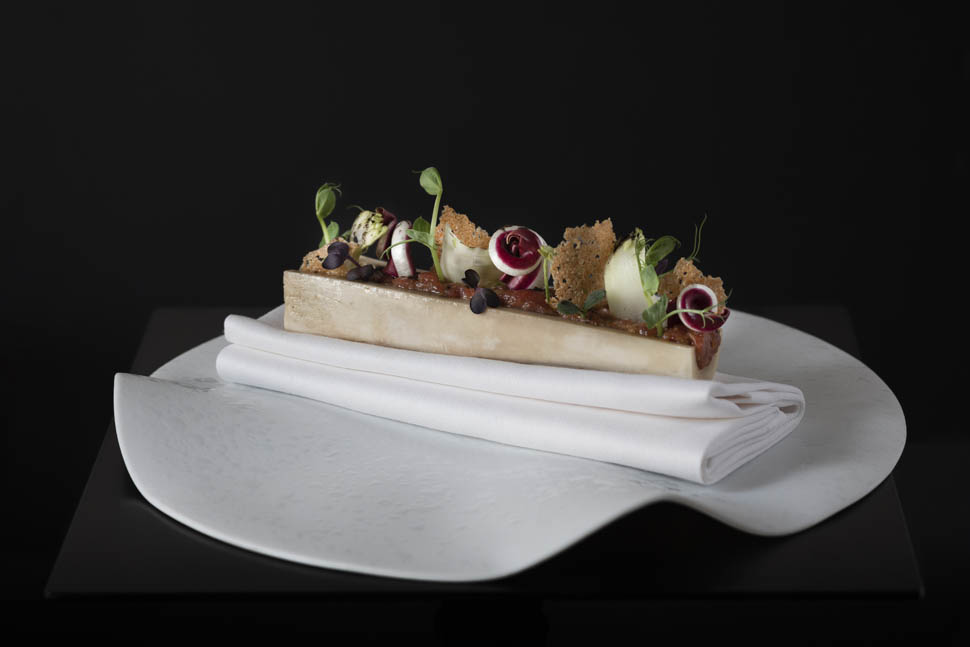
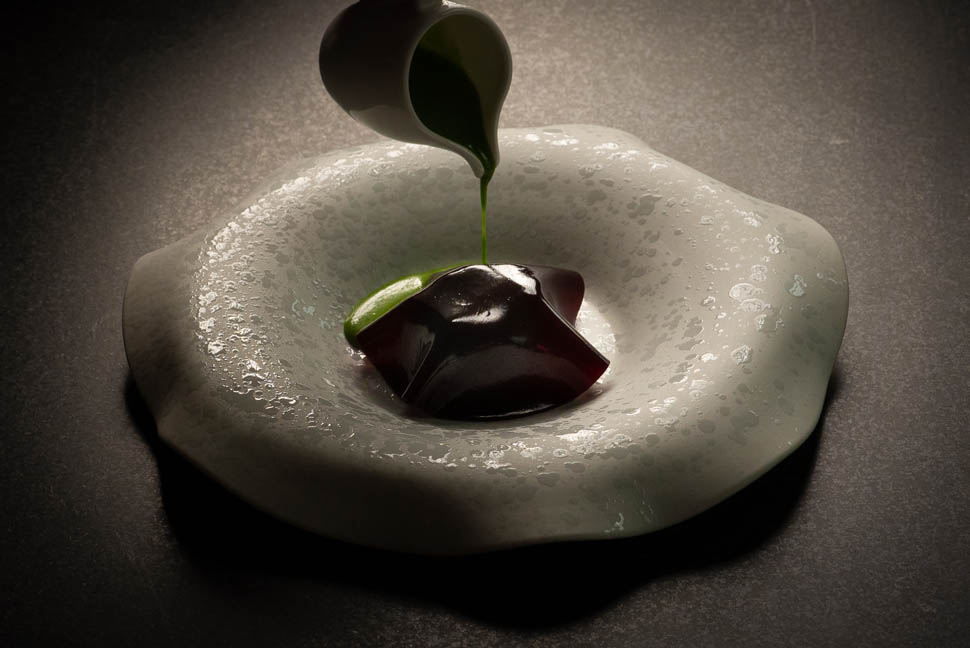
We venture into the first courses with the Pizza Raviolo. A raviolo made like the typical Caprese raviolo; the only fresh pasta raviolo from the island of Capri. The dough, made from water and flour, is filled with a true Margherita pizza cooked in a wood-fired oven. The dish arises from Roberto's desire to showcase the 'pizza flavor,' searing the pasta in a pan as is done with gyoza (the raw dough is basically identical): the outer part is scorched with a torch, and the result, both in appearance and aroma, is precisely that of a Margherita pizza, a sensation confirmed upon tasting. The chef suggests cutting it in half to release the steam and enjoying the first bite with utensils, while the second strictly with your hands, as one does with authentic Neapolitan pizza. An explosion of flavors, a delightful dish, an expression of the most genuine Southern Italian cuisine.
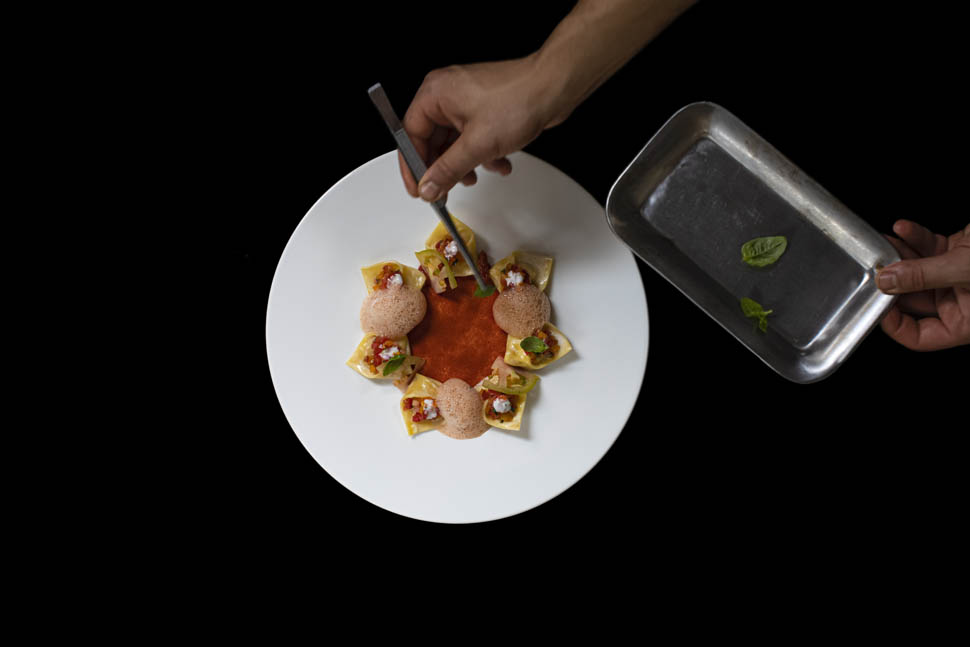
Di Pinto's journey continues with the Green Risotto, lemon, and tuna bottarga, which rightfully can be considered a homage to umami, intensified by the zesty note of grated lemon zest and black lemon powder. The intense green offered by the 12 aromatic herbs used is the visual prelude to a robust and intense dish, revealing a hint of the wild.
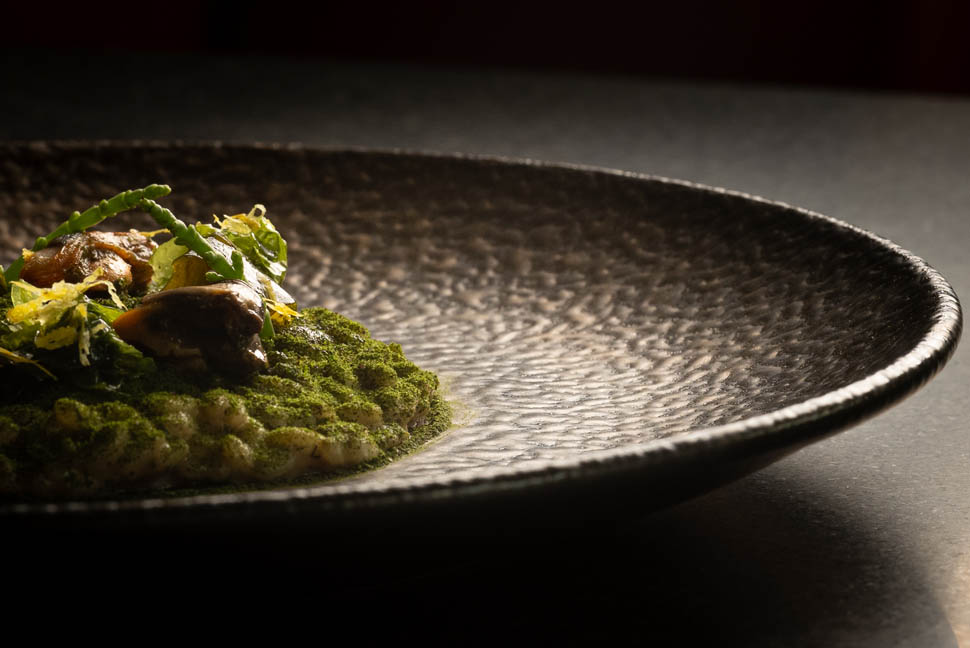
We venture into the world of proteins with Turbot, accompanied by cardoncello mushrooms, oyster zabaione, baby spinach, sour cream, and fermented blueberries. The meatiness, a common denominator between turbot and cardoncello, immediately captivates the palate, then surprised by the acidic note of baby spinach with fermented blueberries and sour cream, and the indulgent quality of the zabaione.
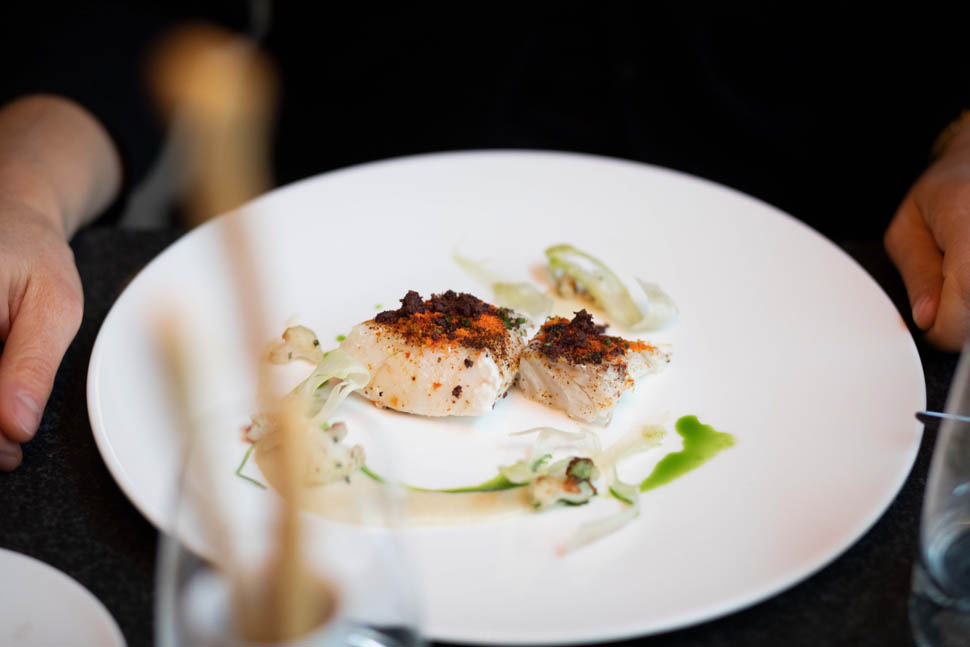
The final act of the savory part is left to the American Angus Diaphragm cooked on the barbecue. At the base, three different pepper sauces: yellow, red, and green. Three sauces with accents ranging from spicy to sweet, emphasized by red Tropea onions baked in salt and then caramelized. The guanciale raviolo with wasabi inside is striking, naturally Neapolitan: a cream prepared with the mature tops of friarielli. The last act is left for the golden 'scarpetta,' needless to say, a tribute to the 'Pibe de oro.' Maradona's golden face is drawn on the plate with dulce de leche flavored with Neapolitan rococò; the ball is a mate-infused bao, for the inevitable 'scarpetta.'
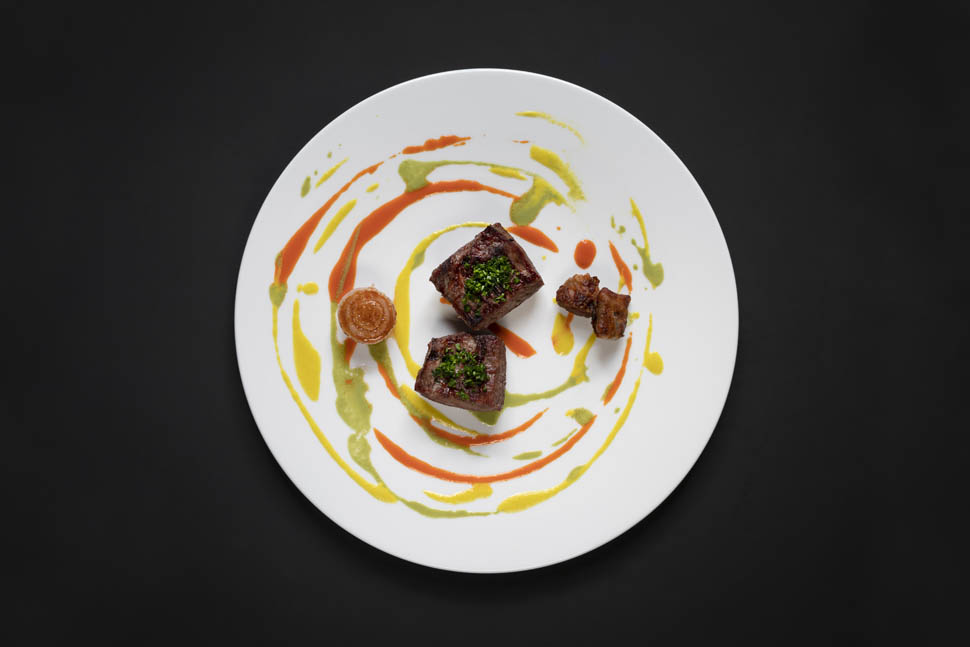
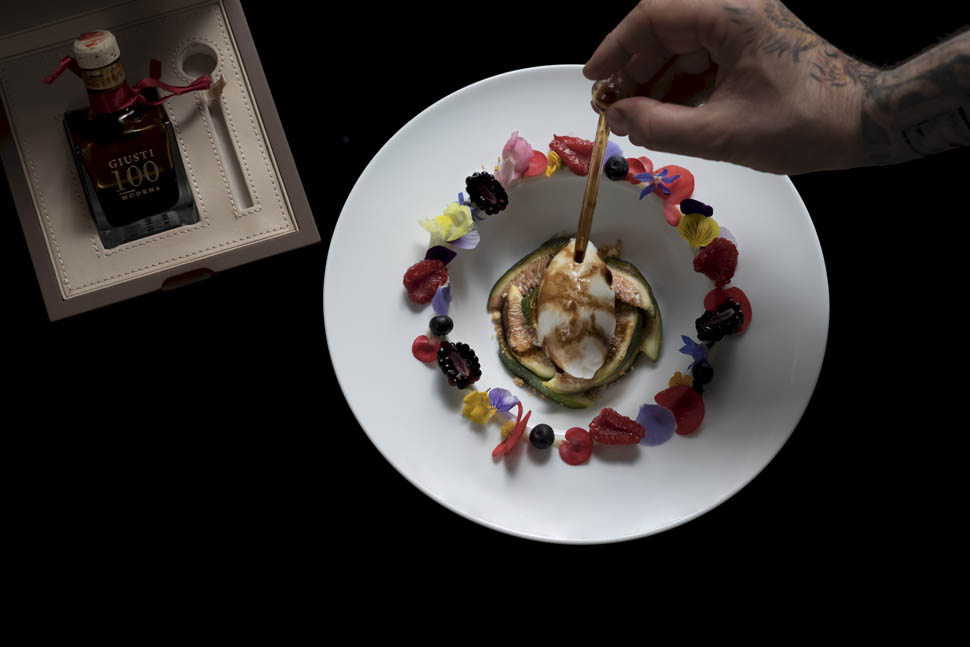
Address
Sine By Di Pinto
Viale Umbria, 126, 20135 Milan MI
Tel: +39 02 3659 4613
